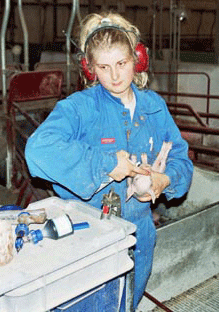What does the Danish law say?
The Noise Limit
No one should be subjected to a noise exposure over 85 dB(A).
Impulse Noise
Impulse Noise – for example from a hammer blow – is seen to be especially harmful to the hearing. If the noise is measured in order to calculate the noise exposure, then 5 dB is added to the measurement result for the periods when there occurred loud impulse noises.
Unnecessary noise
Unnecessary noise exposure should be avoided, even if the noise exposure is under 85 dB(A). In practice noise is considered unnecessary if it is annoying and could be reduced with reasonable and commonly

Hearing protectors
Hearing protectors should always be used if one is exposed to noise that is potentially harmful to the hearing.
If the noise exceeds 80 dB(A), hearing protectors should be made available.
Employers must ensure that hearing protectors are used while the noise is reduced.
When noise exposure is determined to evaluate if the work requirements are fulfilled, hearing protectors are not taken into consideration.
Acoustics
Workspaces should be fitted so that noise is reduced. Room acoustics should be satisfactory – the area should not resound. Precise rules for determining if a workspace is in conformity with the law are available.
Information concerning the purchase of machinery
The supplier should disclose within the instruction manual how much noise the machinery produces
Link:
Akustik i arbejdsrum – At-anvisning nr. 1.1.0.1
